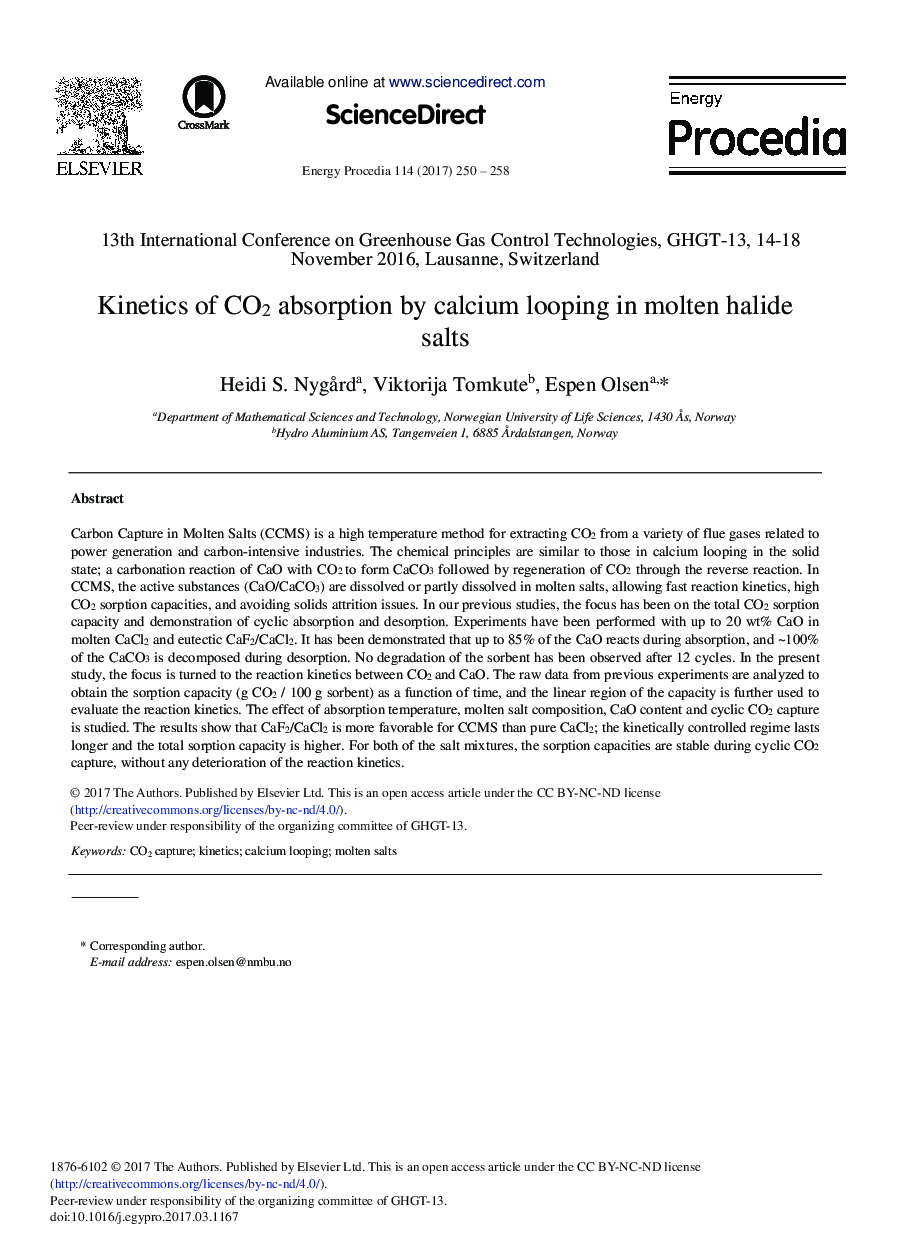| Article ID | Journal | Published Year | Pages | File Type |
|---|---|---|---|---|
| 5445441 | Energy Procedia | 2017 | 9 Pages |
Abstract
Carbon Capture in Molten Salts (CCMS) is a high temperature method for extracting CO2 from a variety of flue gases related to power generation and carbon-intensive industries. The chemical principles are similar to those in calcium looping in the solid state; a carbonation reaction of CaO with CO2 to form CaCO3 followed by regeneration of CO2 through the reverse reaction. In CCMS, the active substances (CaO/CaCO3) are dissolved or partly dissolved in molten salts, allowing fast reaction kinetics, high CO2 sorption capacities, and avoiding solids attrition issues. In our previous studies, the focus has been on the total CO2 sorption capacity and demonstration of cyclic absorption and desorption. Experiments have been performed with up to 20 wt% CaO in molten CaCl2 and eutectic CaF2/CaCl2. It has been demonstrated that up to 85% of the CaO reacts during absorption, and â¼100% of the CaCO3 is decomposed during desorption. No degradation of the sorbent has been observed after 12 cycles. In the present study, the focus is turned to the reaction kinetics between CO2 and CaO. The raw data from previous experiments are analyzed to obtain the sorption capacity (g CO2 / 100Â g sorbent) as a function of time, and the linear region of the capacity is further used to evaluate the reaction kinetics. The effect of absorption temperature, molten salt composition, CaO content and cyclic CO2 capture is studied. The results show that CaF2/CaCl2 is more favorable for CCMS than pure CaCl2; the kinetically controlled regime lasts longer and the total sorption capacity is higher. For both of the salt mixtures, the sorption capacities are stable during cyclic CO2 capture, without any deterioration of the reaction kinetics.
Related Topics
Physical Sciences and Engineering
Energy
Energy (General)
Authors
Heidi S. Nygård, Viktorija Tomkute, Espen Olsen,
